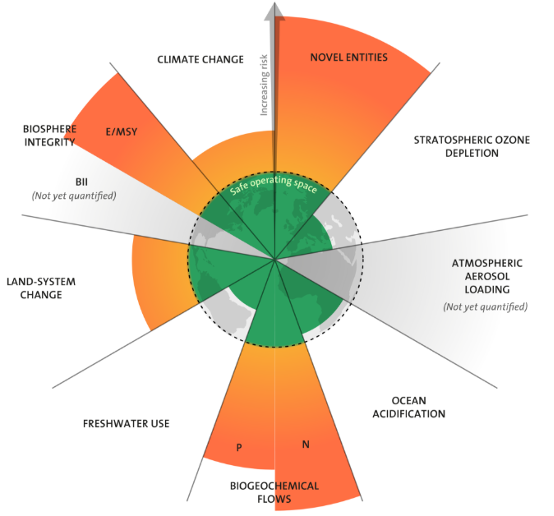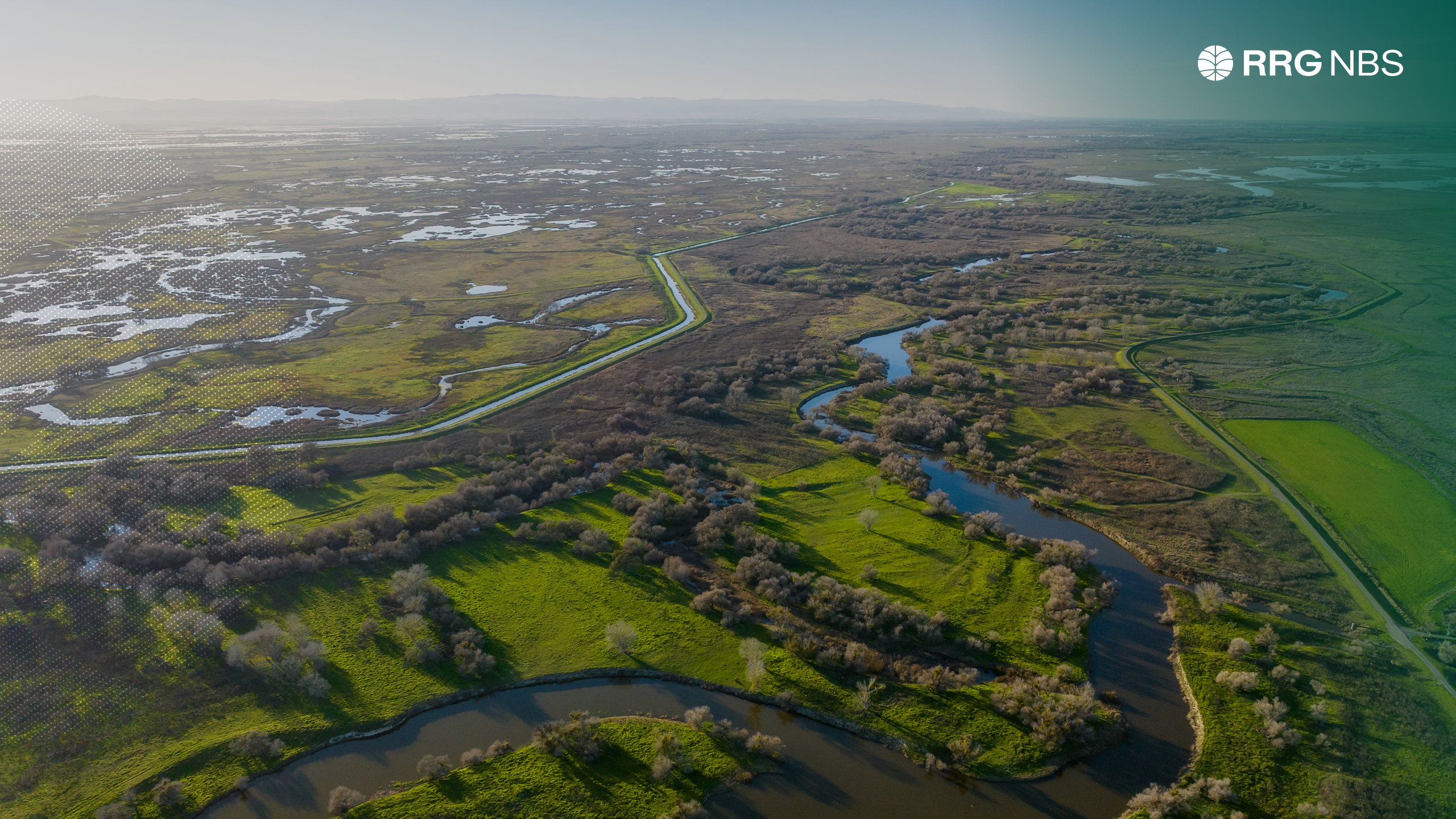Imagine our planet as a home with nine vital support beams. These beams—what scientists call “planetary boundaries”—help keep Earth stable and habitable. But today, five of these beams are cracking under the weight of human activity. Agriculture, in particular, has played a major role in this pressure. It also holds a key to restoring balance.
In 2009, Johan Rockström and colleagues introduced the concept of planetary boundaries: limits we shouldn’t cross if we want to maintain a safe operating space for humanity. By 2022, we had already overshot five of these boundaries: Biosphere Integrity, Nitrogen and Phosphorus Cycles, Land-system Change, Climate Change, and Novel Entities (formerly known as chemical pollution).

Figure 1: Planetary Limits (2022).
Source: Stockholm University
All five are closely tied to the way we grow food. That’s why regenerative agriculture is not a trend; it’s a necessity.
At RRG NBS, we’re committed to agricultural systems that not only reduce harm but actively repair damage. We follow principles aligned with initiatives like the SAI Platform’s Regenerating Together Programme, aiming for net positive impact across ecosystems while supporting resilient, long-term economic outcomes for farming communities.
Let’s take a closer look at three of these breached boundaries, and how regenerative practices offer a path forward.
Biosphere Integrity: Restoring Nature’s Web
Biodiversity is the web that connects life above and below the soil. When it unravels, ecosystems lose resilience.
In Panama, we have witnessed the benefits of shifting from conventional agricultural practices to regenerative methods. This transition has enhanced biodiversity and strengthened farms’ resilience to pests and diseases. By integrating native vegetation as biological barriers between commercial crops, the overall health and sustainability of the farming system improved significantly. Cocoa trees grow beneath a canopy of native species, surrounded by understory crops. These systems increase soil organic carbon (SOC), which supports microbial life, enhances water retention, and deepens root networks.
The science backs up what farmers observe: healthier, more balanced land. Research shows a strong link between biodiversity and SOC levels (Laban, 2018), and both are critical for ecosystem health. These practices can also improve farm productivity and reduce the need for costly chemical inputs.
Nitrogen & Phosphorus: Fertilizing Responsibly
Nitrogen and phosphorus are essential nutrients for crops—but in excess, they become pollutants. Conventional agriculture often applies more fertilizer than plants can absorb, leading to runoff that pollutes rivers and lakes, and contributes to dead zones in oceans.
Our approach is different. We work with farmers to design Agricultural Management Units (AMUs) that optimize nutrient cycles. For example, instead of broadcasting fertilizers, we use precision application based on real-time soil and crop data.
This helps reduce waste and lowers input costs. Farmers don’t pay for nutrients that get washed away. It also protects nearby ecosystems. In a pilot project, a simple adjustment in application timing cut nitrogen runoff by nearly 40%.
This is a clear example of how environmental stewardship and financial resilience are not at odds—they are mutually reinforcing.
Land-System Change: Producing More Without Expanding
One of the largest drivers of deforestation and land degradation is agriculture, particularly for livestock feed and industrial crops. But regenerative farming can help us do more with the land we already have.
For example, in West Africa, many smallholder cocoa farms struggle with declining yields. Rather than clear more land, we help farmers rejuvenate soil and increase productivity through composting, mulching, intercropping, and restoring shade trees.
We also tackle food loss, an often overlooked part of land-use efficiency. Globally, up to 40% of food is never eaten. In lower-income regions, much of this loss happens on the farm or just after harvest due to poor storage and transport. In higher-income countries, most waste occurs at the consumer level.
By supporting better harvest practices and exploring circular economy solutions—like turning cosmetically “ugly” produce into dried snacks or juices—we help make sure the food grown is actually consumed. These practices not only protect landscapes but also help improve incomes and economic stability for farmers.
A Regenerative Future
The planetary boundaries remind us that we’re operating in a finite system. But within those limits, there’s still room for abundance; if we farm in ways that give back to the Earth.
The strain on our planet is undeniable—but so is the opportunity to restore and regenerate our ways of living, farming, and relating to the Earth. We’re committed to co-creating landscapes that can thrive within nature’s boundaries; in a way that supports livelihoods, demonstrating that regenerative agriculture can be both ecologically restorative and economically viable.





